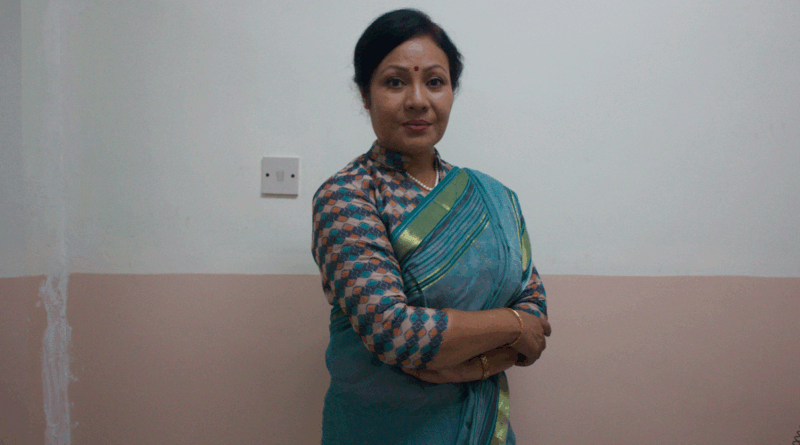Sushila Karki Sworn in as Nepal’s First Female Prime Minister
A photograph acquired on September 12, 2025, portrays a significant event where Nepal’s leader, Ramchandra Paudel, is seen officially swearing in Sushila Karki as the nation’s first female Prime Minister. This ceremony was held at the presidential residence in Kathmandu, the capital of Nepal. Karki, who formerly held the position of Chief Justice, climbed the political ladder and made history by becoming the premier of the interim government, setting a new precedent for women in the country.
The ascension of Karki to Prime Minister comes after a period of intense political turmoil, which resulted in the previous Prime Minister, K P Sharma Oli’s resignation. Oli was compelled to step down due to a nationwide outcry spurred by a contentious decision to prohibit social media. The national unrest which followed was catastrophic, marking some of the worst tumult the mountaineous nation had experienced in several decades.
Karki, aged 73 at the time, received her oath of office from President Paudel three days post-Oli’s relinquishing of the role. The change in regime came amidst chaos and uncertainty, and Karki’s appointment brought temporary stability to an unstable political scenario.
President Paudel announced that the interim government, led by the newly appointed Prime Minister Karki, had the responsibility of conducting the next Parliament elections. The deadline for these elections was set at six months from the time Karki assumed office.
The inauguration of Karki, saw an assembly of distinguished individuals in attendance. The congregation was comprised of Nepal’s highest legal officer, the Chief Justice, along with important government bureaucrats, security leaders, and representatives from the International Diplomatic community.
India, as an immediate neighbour, displayed a positive response towards the establishment of a transient government in Nepal – touting optimism and hope for peace and stability. It was expressed that as a fellow democracy and as a long-term development partner, it was India’s commitment to lend its continuous support in fostering Nepal’s growth and progress.
Karki’s journey to helm the interim government commenced post-discussions amongst various significant figures in the country. These included President Paudel, senior military officials, and the youth protesters who were central to the anti-government demonstrations.
Known for her honest, forthright demeanor, and exemplary track record as the former Chief Justice, it was her education from Banaras Hindu University that came into the forefront of discussions. Karki was ultimately appointed as the leader of the interim administration, post-multiple meetings and negotiations amongst President Paudel, the Chief of Nepal’s armed forces, and representatives of ‘Gen Z’ – the youth protesters.
One of the highest-priority tasks earmarked for Karki after her first cabinet meeting was to propose the dissolution of the existing Parliament. This proposition was part of an agreement made during the discussions with the young leaders of the protests, as revealed by top sources.
Prior to appointing Karki to lead the interim government, the President held consultations with various leaders of noteworthy political parties, legal specialists and influential figures in civil society, ensuring a wide range of perspectives were considered.
The ‘Gen Z’ demonstrators, primarily composed of students, voiced their demands concretely. They sought an overhaul in the system to tackle corruption, nepotism and political disarray, which they believed were hampering Nepal’s progress.
These protests initially sparked off a reaction to the government’s decision to ban the usage of social media platforms. However, the movement soon grew into a larger campaign of dissatisfaction against the Oli government, and the political elite of the country, for their purported disregard for common citizens, corruption and extravagant lifestyles.
Despite revocation of the social media ban, the protests intensified with heightened focus on corruption and the opulence of political leaders as major points of agitation. Oli’s resignation was accompanied by a letter to President Paudel, acknowledging the ‘extraordinary circumstances’ that Nepal was grappling with, and professing that his resignation was to make way for a resolution in accordance with the constitution and political means.
In a move towards tackling the deadlock, Devaraj Ghimire, Speaker of Nepal’s House of Representatives, and the Chairman of the National Assembly, Narayan Dahal, stressed the need to resolve the crisis ‘within the framework of the Constitution’, expressing the urgency to uphold rule of law and constitutionalism. They placed emphasis on a comprehensive approach to meet the protesters’ demands and commitment towards nurturing a genuinely resilient democratic system. The violent demonstrations led to a death toll of 51, including an Indian national and three police officers. Control of the situation has since been handed over to Nepal’s armed forces.

